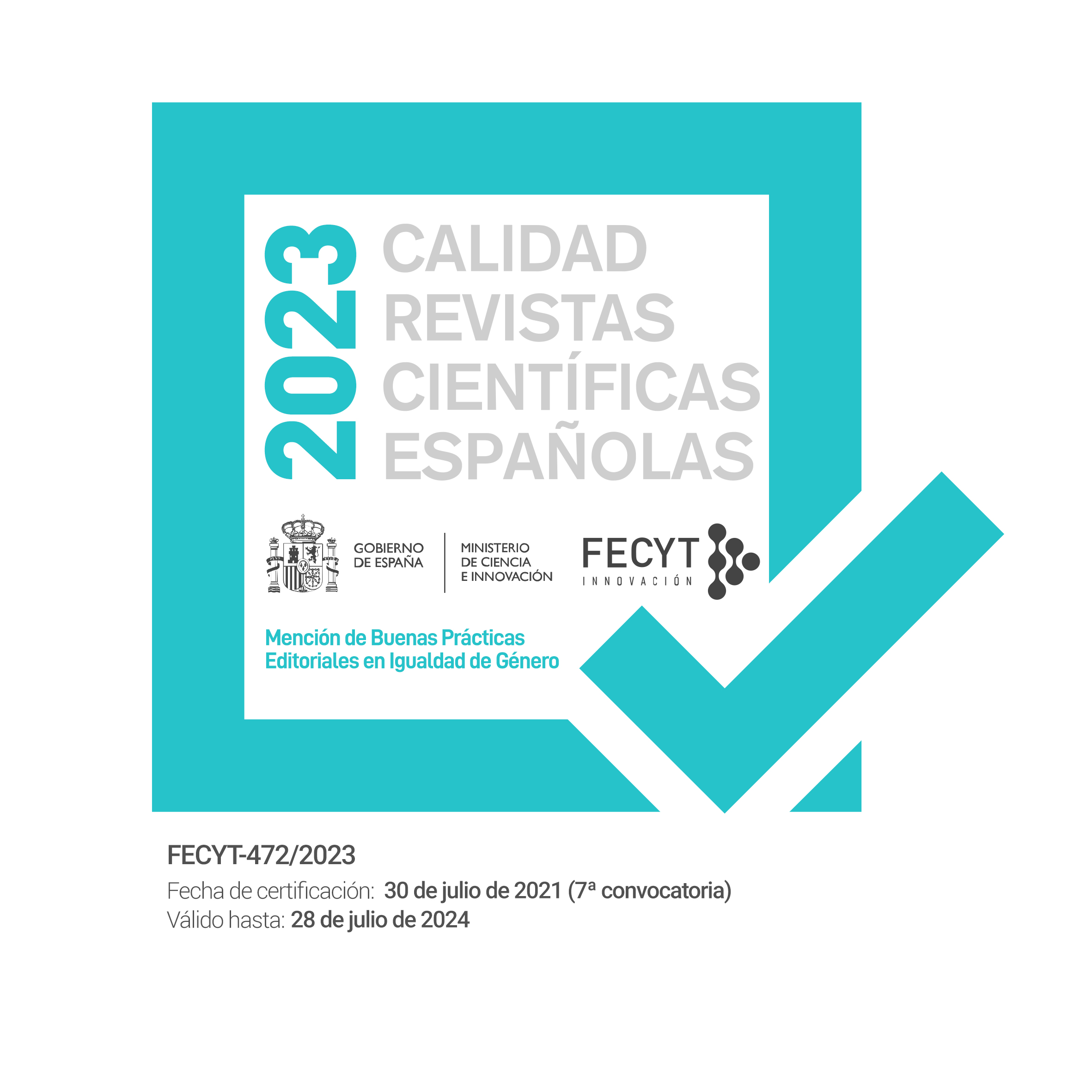
ISSN-e: 1988-7213
DOI: 10.30827/erph
La revista erph, de periodicidad semestral, nace con la vocación de convertirse en un referente de la Protección del Patrimonio Histórico, de ahí que sus objetivos y estructura respondan a las exigencias y filosofía de la propia Tutela. El ámbito de estudio y reflexión de esta revista es la Tutela a nivel nacional e internacional en su conjunto (legislación, administración, restauración, difusión, etc.) y, como consecuencia, el Patrimonio Histórico en su totalidad y unidad en cuanto objeto de ésta, superando con ello el carácter fragmentario o parcial que presentan otras publicaciones periódicas existentes.
Este carácter globalizador e integrador se extiende también a la dimensión geográfica, todo el territorio español y todos los análisis de carácter internacional, ya que entendemos que el Patrimonio Histórico se asienta y constituye en el reconocimiento de un interés general que no admite una apropiación excluyente y reductiva, más allá del respeto a las inevitables fronteras administrativo-competenciales. Puesto que la disciplina de la Protección se instituye en este interés social, la manifestación del mismo a través de las iniciativas ciudadanas tendrá también una presencia relevante en esta publicación, sumándonos de esta forma a la construcción social y dinámica del Patrimonio Histórico.
La revista pretende dar cabida a estudios y experiencias que afronten todas las acciones la protección patrimonial tanto desde una perspectiva actual como histórica, ya que entendemos el Patrimonio Histórico como un concepto evolutivo y diacrónico, que acumula las aportaciones de cada época generando una construcción histórica y dinámica cuya relevancia social exige su continuidad futura. Por ello, desde la revista estaremos muy atentos a los cambios, tendencias y novedades que vayan produciéndose en cualquier ámbito de la Tutela.
La condición electrónica de la revista erph es una seña de identidad y una cualidad a desarrollar en su máximo potencial. Esto incluye la renovación de los contenidos habituales de una revista científica -incluyendo en los artículos todo tipo de vínculos que permitan las nuevas tecnologías-, y lo referido a la accesibilidad y visibilidad de la misma.
Con todo ello pretendemos conseguir el máximo impacto posible con la intención de llegar al mayor número de personas y alcanzar el mayor reconocimiento científico para los trabajos de nuestros autores/as.
El público objetivo de la revista erph está compuesto por profesionales, académicos, investigadores y estudiantes interesados en la Protección del Patrimonio Histórico, incluyendo áreas como legislación, administración, restauración y difusión. La revista está dirigida tanto a especialistas en Tutela del Patrimonio Histórico a nivel nacional e internacional, como a ciudadanos involucrados en iniciativas de conservación. Su enfoque global e integrador busca llegar a un público diverso comprometido con la protección y gestión del patrimonio histórico.
La revista cuenta con el apoyo financiero del Grupo de Investigación HUM 222 “Cultura artística y patrimonio histórico", el Departamento de Historia del Arte de la Universidad de Granada y del Vicerrectorado de Investigación y Transferencia de la misma universidad, a través del Programa de Ayudas a Revistas Académicas. Este respaldo permite a erph ofrecer acceso abierto y gratuito, eliminando así cualquier costo de procesamiento o presentación de manuscritos.
La revista rph está incluida en bases de datos y sistemas de indexación relevantes para garantizar la visibilidad, accesibilidad y reconocimiento académico de los trabajos publicados, promoviendo así su difusión internacional en el ámbito de la Protección del Patrimonio Histórico. Indexaciones.
La revista erph_revista electrónica de patrimonio histórico es propiedad de la Universidad de Granada, y su edición está a cargo de la Editorial Universidad de Granada (EUG), institución responsable de su gestión, producción y difusión.
Asimismo, cualquier modificación en su gobernanza o acuerdos de coedición con otras instituciones deberá ser tratado en el marco de la Editorial Universidad de Granada, y se llevará a cabo bajo su supervisión, garantizando la continuidad de los estándares de calidad y rigor académico que caracterizan a la publicación.

ISSN-e: 1988-7213
DOI: 10.30827/erph
Indexaciones y Calidad


Contacta con nosotros: redaccionerph@ugr.es
Dpto. Historia del Arte. Facultad de Filosofía y Letras. Campus Universitario de Cartuja s/n, 18071 Granada
Declaración de privacidad | Aviso legal | Licencia CC BY-NC 4.0 | Aspectos éticos | Contacto
© 2023 Universidad de Granada
